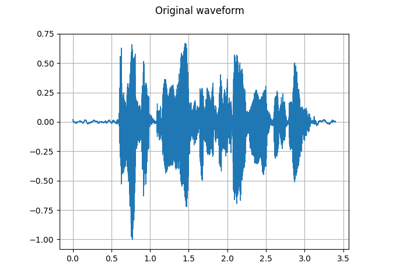torchaudio.functional.melscale_fbanks
- torchaudio.functional.melscale_fbanks(n_freqs: int, f_min: float, f_max: float, n_mels: int, sample_rate: int, norm: Optional[str] = None, mel_scale: str = 'htk') Tensor[source]
Create a frequency bin conversion matrix.
Note
For the sake of the numerical compatibility with librosa, not all the coefficients in the resulting filter bank has magnitude of 1.

- Parameters:
n_freqs (int) – Number of frequencies to highlight/apply
f_min (float) – Minimum frequency (Hz)
f_max (float) – Maximum frequency (Hz)
n_mels (int) – Number of mel filterbanks
sample_rate (int) – Sample rate of the audio waveform
norm (str or None, optional) – If “slaney”, divide the triangular mel weights by the width of the mel band (area normalization). (Default:
None)mel_scale (str, optional) – Scale to use:
htkorslaney. (Default:htk)
- Returns:
Triangular filter banks (fb matrix) of size (
n_freqs,n_mels) meaning number of frequencies to highlight/apply to x the number of filterbanks. Each column is a filterbank so that assuming there is a matrix A of size (…,n_freqs), the applied result would beA * melscale_fbanks(A.size(-1), ...).- Return type:
Tensor
- Tutorials using
melscale_fbanks:

